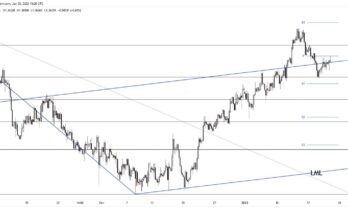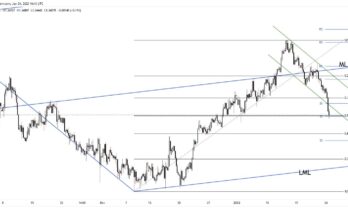GBP/USD started on the back foot at the start of the week, trading at sub-1.50 on Monday. The dollar then started to show signs of weakness as a few technical levels were tripped in EUR/USD, sparking a splurge of short covering. GBP/USD shadowed the pair higher and recovered off of 1.4995 to trade to a high of 1.5187.
UK construction PMI supported the move higher in cable and showed that the Markit index rose to 59.1 in January vs. expectations for 56.9. It indicated that output and new business growth in the construction industry rebounded from December’s lows. Wednesday morning’s UK services PMI for January also printed stronger than expected.
The purchasing managers’ index rose to 57.2 in January, up from a 17 month low of 55.8 in December and beating forecasts for 56.6. GBP/USD made steady gains again on the back of the release, trading to a high of 1.5248.
By Alex Edwards at UKForex, an international money transfer service
Come Wednesday afternoon, the pound started to wobble along with EUR/USD. The ECB announced that it was revoking a waiver that allowed banks to use Greek government debt as collateral for loans, causing the EUR/USD pair to break down through various stops.
The central bank went on to say the “suspension is in line with existing Eurosystem rules, since it is currently not possible to assume a successful conclusion of the programme reviewâ€, but that “this decision does not bear consequences for the counterparty status of Greek financial institutions in monetary policy operationsâ€.
Nonetheless, it spooked investors and the dollar – as a safe haven – firmed up across the board. GBP/USD fell back to 1.5170. It’s clear that the ECB are putting more and more pressure on Greece at the moment to come to terms with lenders over its bailout programme.
The single currency recovered later in the week, on the back of reports that the Swiss National Bank was buying EUR/USD and USD/CHF in an attempt to weaken the value of the Swiss franc. However, it faced pressure from the release of US non-farm payrolls on Friday afternoon.
It was another strong US jobs report showing that 257,000 jobs were created in January against expectations for 236,000. The prior two months were revised up too to 423k and 329k, and wages for the month rose by 0.5%. Data like this only serves to underline the divergence between expectations for the Fed’s monetary policy and that of other major central banks, which are either looking to cut rates or leave on hold for a considerable period of time.
Don’t be surprised to see the dollar-bid momentum continue into the early part of this week and to see GBP/USD test another break of 1.50. That said, if UK manufacturing production data on Tuesday beats expectations, this big figure may remain protected given the positive PMIs released last week.
Next week, Governor Carney is due to speak following the publication of the central bank’s Inflation Report. US retail sales are also due later in the week. Meanwhile, it wouldn’t be a surprise to see further downward pressure on the euro. The ECB looks likely to spice up its rhetoric and get ever more serious with Greece’s new government, as finance minister Varoufakis continues to suggest alternative lending plans.
In our latest podcast, we do an Aussie Analysis, Greek Grindings and Oil Optimism.
Subscribe to our iTunes page



